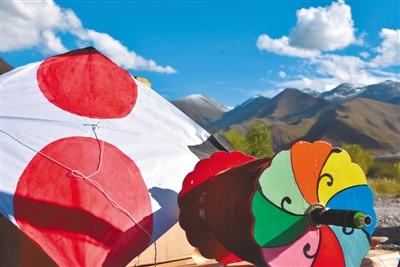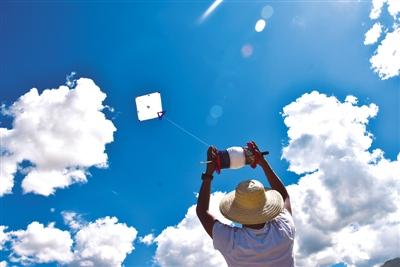By 朱杉 Source:China Tibet News 2016-12-20
With a history of more than 1,000 years, the Tibetan kite is called “Qiapi” or “Xiuxia” in Tibetan language.
The Tibetan kite is popular in Lhasa, Shigatse and other regions of China's Tibet. Compared with kite-flying in inland China, which always happen during the Tomb-Sweeping Day, Tibetan kites are played in fall harvest season, marking the bumper harvest of crops and fruits.
Tibetan kites are rhombohedral with colorful drawings that are closely related to Tibetan people's living and religion. Besides, it also reflects their unique aesthetics.
The most significant characteristic of Tibetan kite-flying is “to fight”. The fighting weapons are kite threads that hit and rub against each other. The one that is not cut off is the winner. The fighting weapons need pasting a sort of coating referred as “Na” in Tibetan language. It is a mixture of glass fragment, flour, sugar and rosin. By doing this, the kite thread will become sharp enough to cut off the others.

Photo shows the Tibetan kite. [Photo/China Tibet News]

Photo shows that a kite lover is flying the Tibetan kite along the Lhasa River. [Photo/China Tibet News]
Copyright © Xizang Daily & China Xizang News All rights reserved
Reproduction in whole or in part without permissions prohibited
Index Code: 藏 ICP 备 05000021 号
Producer: Xizang Daily International Communication Center